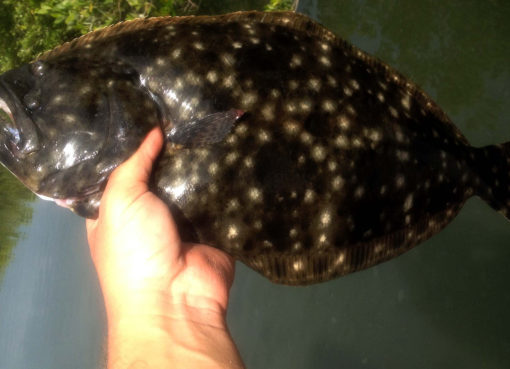Cold water fishing can be succesful if a few tips are followed.
When winter sets in the cooler air causes the water temperatures to drop. This change in water temperature brings along a needed change in bait/lure presentation.
Fish are cold blooded, and because of this, their energy levels are highly affected by the temperature of the water they live in. Fish that are accustomed to water in the upper 70’s slow down quite a bit when the water reaches the 60’s. Because they slow down so much, it is important to change the presentation to suit the target’s energy level.
Here are a few techniques that will help increase the number of fish caught when cold water fishing.
Larger Baits
When water temperatures fall, one thing that can entice a reluctant fish to bite is a larger bait/lure. Because of their reduced energy level, fish tend to conserve what energy they do have and only attack prey that is deemed easy and valuable. Larger prey is high up on the value list and will often get hit much more readily than smaller prey.
Use a lure/bait that is bigger than normal, but still small enough to fit into the targeted fish’s mouth. When using live bait, try to select the larger versions of your favorite bait, and when using lures up the size by at least one size.
Cold Water Fishing – Slower Retrieve
When determining if a prey item is worth the effort needed to catch it, the speed of the prey is considered by the fish. A slower prey item is more attractive to a fish because it takes less effort to run it down and capture it. Slowing the retrieve of a lure/bait will increase the amount of hits by cold water fish. A rule of thumb is “if you think you are retrieving slow enough, slow it down just a little bit more”
Many times fish will strike a bait while it is moving so slow that the angler did not think they would get a hit.
Subtle Movements
Cold water affects prey items just as much as it does the game fish. Bait fish slow down and move with more subtle movements when cold than they do in the warmer months. A rapid, sudden jerking motion that would work in the spring/summer may not work as well in the winter (fish tend to notice if something is acting highly unnatural), while a slow gentle upward swing of the rod may entice a bite from a reluctant fish.
One technique that works in both warm water and cold is to allow pauses in your retrieve. If the lure is a sinking lure, allow it to fall. If the lure suspends, just let it rest. Often, more strikes will occur during this period than during active retrieve.
Exceptions to the Rule
There are, of course, exceptions to the rule. Fish like Bluefish and Spanish Mackerel almost always prefer fast moving flashy baits, no matter the water temperature. When targeting these fish, be sure to vary your presentation, including fast, rapid movements!
Quick Cold Water Tips:
- Use a slow presentation
- Fish deeper water than normal
- Areas with dark bottom warm faster than lighter and warmer water will attract fish
- Deep holes near structure tend to preform well




